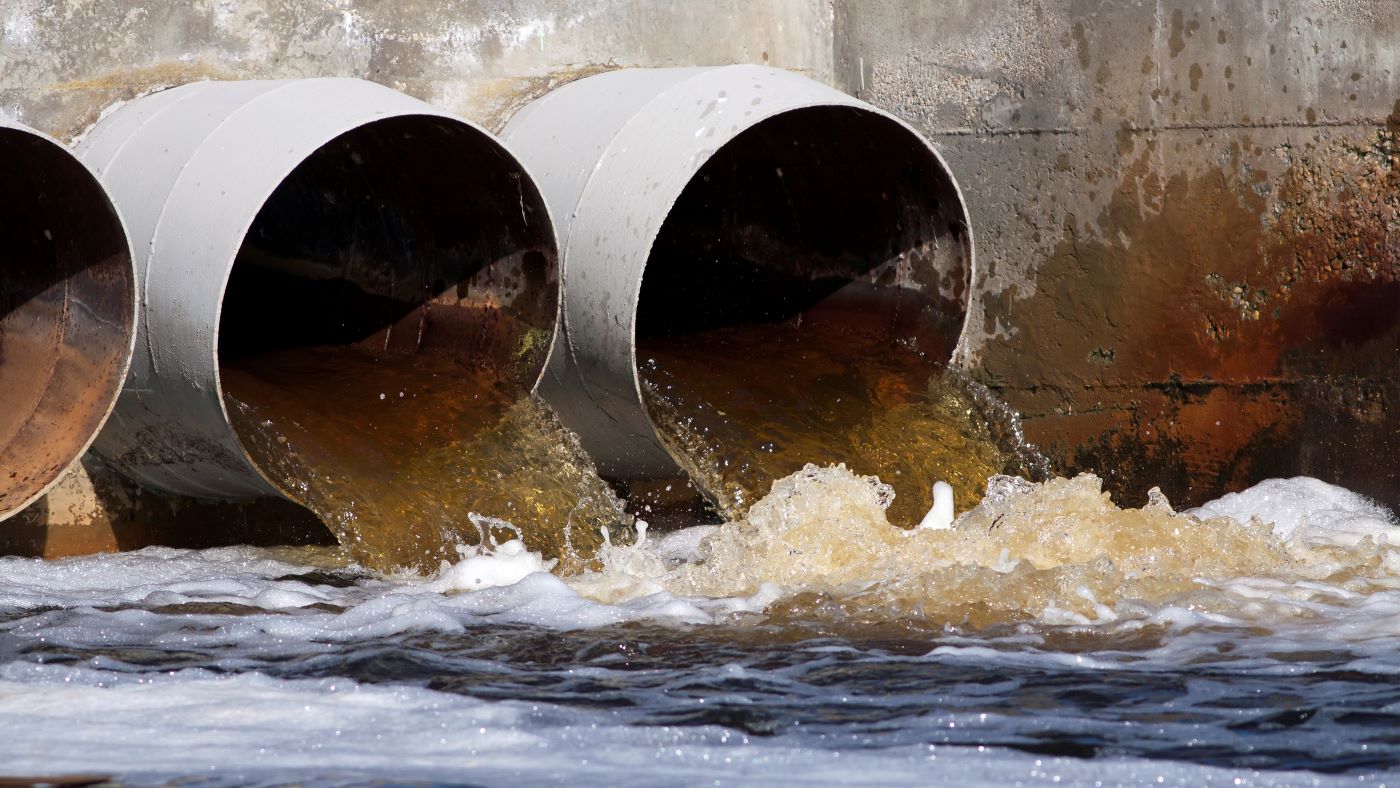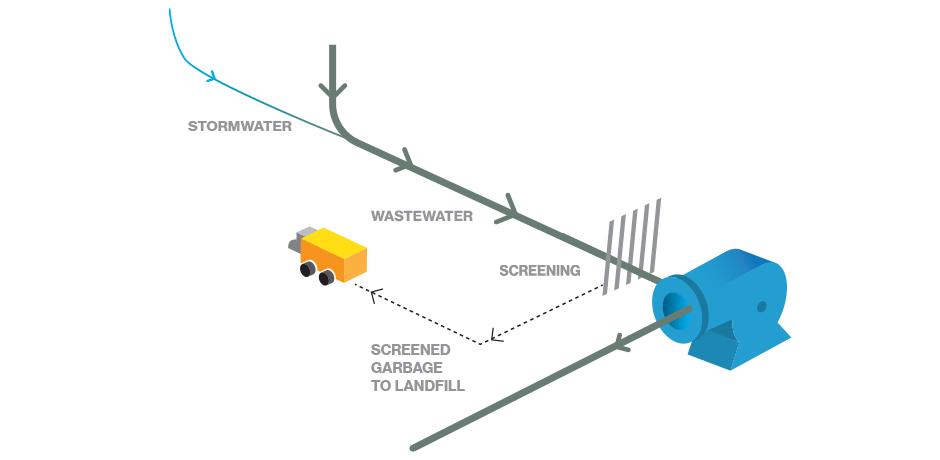Cost-efficient Solutions for Large-Scale Waste Water Treatment Facilities
Optimizing Drainage Treatment Procedures: Techniques for Improved Water Top Quality and Source Recovery
In the realm of wastewater treatment, the quest for enhancing efficiency and sustainability via process optimization is an ongoing pursuit that holds immense relevance. By focusing in on strategies customized to elevate water high quality while all at once harnessing important sources, treatment plants can attend to pressing environmental issues while unlocking financial benefits. From cutting-edge modern technologies to cutting-edge source healing methods, the landscape of wastewater therapy is evolving swiftly. As we explore the intricacies of enhancing these procedures, a globe of opportunities arises that guarantees not just cleaner water however additionally a much more lasting future.
Significance of Process Optimization
Maximizing drainage treatment processes through meticulous process optimization is essential for optimizing performance and making sure environmental sustainability. By fine-tuning each step of the therapy procedure, from preliminary intake to last discharge, water therapy facilities can achieve greater levels of contaminant elimination, minimize energy intake, and lessen the generation of waste spin-offs. Process optimization entails examining essential efficiency signs, such as hydraulic retention times, sludge retention times, and nutrient levels, to recognize locations for improvement and apply targeted options.
Efficient procedure optimization not only enhances the general performance of drainage treatment plants yet likewise contributes to set you back savings and governing compliance. By maximizing processes, operators can accomplish higher therapy capacities without the demand for significant framework investments. In addition, improved therapy efficiency brings about cleaner effluent discharge, decreasing the ecological effect on obtaining water bodies and communities.

Advanced Therapy Technologies
In the realm of drainage therapy, the implementation of sophisticated therapy technologies plays a pivotal function in boosting the overall effectiveness and performance of the therapy processes. These advanced modern technologies offer innovative options to attend to intricate contaminants present in wastewater streams, guaranteeing the elimination of toxins to fulfill stringent water high quality requirements. Advanced therapy procedures such as membrane layer bioreactors, ozonation, progressed oxidation procedures, and reverse osmosis enable the extensive elimination of impurities, consisting of arising toxins like drugs and individual treatment items.
Moreover, these technologies facilitate resource recovery by extracting important materials such as phosphorus, nitrogen, and energy from the wastewater. Advanced nutrient removal technologies can recover phosphorus and nitrogen for reuse in agricultural plant foods, while power healing systems like anaerobic digestion can harness biogas for electrical power generation. By integrating sophisticated treatment technologies right into wastewater therapy plants, operators can improve water quality, reduce ecological influence, and move towards a more resource-efficient and lasting method to wastewater management.
Source Healing Methods
Resource recuperation methods in wastewater treatment procedures play an important duty in making best use of the use of important sources consisted of within wastewater streams. These techniques goal to extract and reuse products such as nutrients, energy, and water from the wastewater, transforming what was when considered waste into valuable resources. One usual resource recuperation method is the removal of nutrients like phosphorus and nitrogen from wastewater for reuse as fertilizers or in commercial processes. Furthermore, power healing approaches such as anaerobic digestion and biogas manufacturing help harness the energy possibility of organic issue in wastewater to generate power or warm.
Water healing strategies, such as membrane layer technologies and advanced filtering systems, make it possible for the treatment and reuse of water for non-potable applications like irrigation see this here or industrial processes. By carrying out source recovery techniques in wastewater treatment plants, not only can useful resources be conserved and reused, but the general sustainability and effectiveness of the therapy procedure can be significantly enhanced. As the focus on resource shortage and environmental sustainability continues to grow, the value of incorporating source recuperation strategies right into wastewater therapy procedures comes to be significantly noticeable.
Lasting Practices in Wastewater Therapy
Applying lasting techniques in wastewater therapy centers is necessary for boosting ecological stewardship and long-lasting operational effectiveness. Sustainable practices in wastewater treatment incorporate a variety of approaches focused on lessening the ecological effect of treatment processes while maximizing source recuperation. One crucial element of sustainable wastewater therapy is the execution of energy-efficient innovations to decrease the carbon footprint of treatment plants. This can consist of making use of renewable resource sources such as solar or wind power, in addition to the optimization of existing procedures to decrease power usage.
Additionally, the fostering of advanced therapy technologies that advertise water see page reuse and recycling plays an essential duty in sustainable wastewater monitoring. By treating wastewater to a high criterion, it can be repurposed for various non-potable applications, such as watering, commercial processes, and also potable water manufacturing in some cases. This not only preserves important freshwater sources but likewise lowers the volume of effluent released right into the atmosphere.

Case Studies on Successful Optimization
As wastewater treatment centers significantly concentrate on lasting techniques, real-world study showcasing effective optimization approaches act as invaluable versions for sector innovation. One such study rotates around the application of sophisticated nutrient removal technologies in a municipal wastewater therapy plant. By including organic nutrient removal processes and maximizing functional specifications, the facility achieved substantial decreases in nitrogen and phosphorus levels discharged right into getting waters, eventually improving total water high quality.
One more notable instance research study includes the integration of anaerobic food digestion systems in an industrial wastewater treatment plant to boost energy recuperation and source efficiency (Waste Water Treatment). Via the food digestion of organic waste products, the facility not only generated biogas for energy production yet additionally decreased the quantity of sludge needing disposal. This dual advantage not only boosted the plant's sustainability performance yet likewise resulted in expense savings
These effective optimization techniques show the capacity for wastewater therapy facilities to attain both environmental and financial benefits with innovative techniques and efficient procedures. By finding out from these study, industry experts can better enhance their very own operations to enhance water top quality and resource recovery.
Verdict
To conclude, enhancing drainage treatment processes with innovative technologies, resource recuperation strategies, and sustainable methods is critical for improving water high quality and maximizing resource healing. Waste Water Treatment. Instance researches have demonstrated successful application of optimization methods in numerous wastewater therapy facilities. By continuing to prioritize process optimization, we can make sure effective and efficient treatment of wastewater, eventually causing an extra eco pleasant and lasting approach to managing water sources
By fine-tuning each action of the therapy procedure, from first consumption to last discharge, water therapy centers can accomplish greater levels of pollutant removal, decrease energy consumption, and minimize the generation of waste by-products.In the realm of waste water treatment, the application of sophisticated treatment technologies plays a pivotal role in boosting the total effectiveness and efficiency of the treatment processes. By including innovative therapy innovations into wastewater therapy plants, operators can improve water quality, reduce ecological effect, and move in the direction of an extra sustainable and resource-efficient approach to wastewater monitoring.
By carrying out resource recuperation strategies in wastewater treatment plants, not just can useful resources be conserved and recycled, but the total sustainability and effectiveness of the treatment procedure can be substantially enhanced. Lasting methods in wastewater treatment incorporate a range of approaches intended at minimizing the ecological impact of therapy processes while maximizing source recovery.